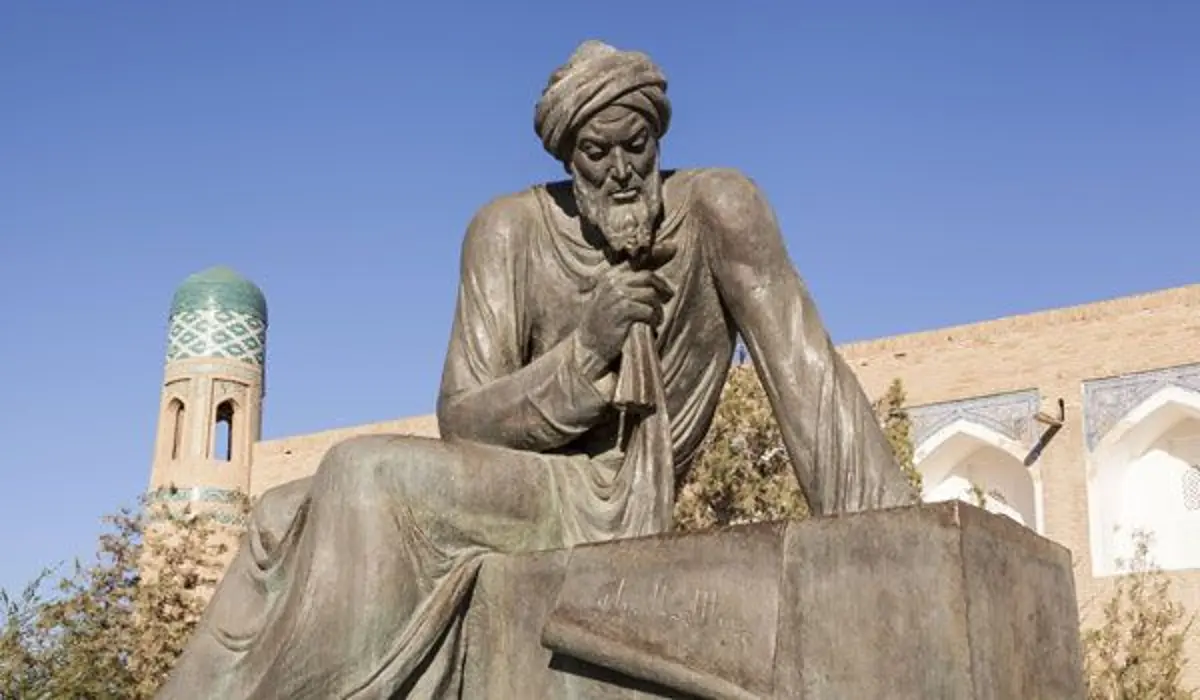
Assalamualaikum
Welcome to another edition of English Corner, my name is Rifki Kusmana. This is an article about Al-Khwarizmi, the brilliant Persian Mathematician.
An Indonesian version of this article is available here.
Al-Khwarizmi, The Brilliant Persian Mathematician
Biography and History
Muhammed ibn-Musa al-Khwarizmi (born c. 780 —died c. 850), was a Persian Muslim mathematician and astronomer whose major works introduced Hindu-Arabic numerals and the concepts of algebra into European mathematics. His name indicates that he was “Muhammed, son of Moses, father of Jafar, from Khwarizm” (modern Khiva, south of the Aral Sea in central Asia); Latinized versions of his name (Algoritmi) and of his most famous book title live on in the terms algorithm and algebra. Al-Khwarizmi lived in Baghdad, where he worked at the House of Wisdom under the caliphate of al-Maʾmun. The House of Wisdom acquired and translated scientific and philosophic treatises, particularly Greek, as well as publishing original research.
Al-Khwarizmi’s work on elementary algebra, Al-Kitab al-mukhtasar fi hisab al-jabr wa’l-muqabala, was translated into Latin in the 12th century, from which the title and term algebra derives. Algebra is a compilation of rules, together with demonstrations, for finding solutions of linear and quadratic equations based on intuitive geometric arguments, rather than the abstract notation now associated with the subject. In the 12th century a second work by Al-Khwarizmi introduced Hindu-Arabic numerals and their arithmetic to the West The Hindu numerals like much new mathematics were not welcomed by all. In 1299 there was a law in the commercial center of Florence forbidding their use.
Al-Khwarizmi is also responsible for developing trigonometric tables containing sine functions. They were later used to help form tangent functions. He also developed the calculus of two errors, which led him to the concept of differentiation. He was also an astronomer as mentioned previously, and he wrote a treatise on astronomy, and also a book on astronomical tables. It was not until his books on astronomy were translated into Latin that the West was introduced to these new scientific concepts. His work with geography also contributed a great deal to society. Al-Khwarizmi revised Ptolemy’s views on geography. He had seventy geographers working under his leadership, and they produced the first map of the known world in 830 BCE. Al-Khwarizmi also was the first to attempt to get a measurement of the volume and circumference of the earth. His book on geography was entitled “Kitab surat-al-Ard,” which included maps. Al-Khwarizmi also did much work relative to time. He wrote works on clocks, astrolabes, and sundials.
Al-jabr
From his most important book, Al-jabr wa’l muqabalah, comes the word algebra. The word Al-jabr presumably meant “restoration” or “completion” and seems to refer to the transposition of subtracted terms to the other side of an equation; the word muqabalah is said to refer to “reduction” or “balancing”–that is, the cancellation of like terms on opposite sides of the equations or the simplification of the resulting expression.
Diophantus is sometimes called “the father of Algebra,” but this title more appropriately belongs to al-Khwarizmi. Al-Khwarizmi’s work is on a more elementary and rhetorical level than that of Diophantus. Also, Arab scholars did not make any use of syncopation or of negative numbers. Al-jabr comes closer to elementary algebra of today than the works of either Diophantus or Brahmagupta, because the book is not concerned with difficult problems in indeterminate analysis but with a straight forward and elementary exposition of the solution of equations, especially that of second degree.
Origins of Algebra
It is the question of what type of inspirations inspired Arabic algebra? Judging from evidence internal to al-Khwarizmi’s Al-jabr wa’l-muqabala , the mathematical environment in which his ideas developed included facts, theories, and approaches from several recognizable sources. It is stated that no categorical answer can be given; but the arbitrariness of the rules and the strictly numerical form of the six chapters carries an ancient Babylonian and medieval Indian mathematics. Also, Mesopotamia is more likely a source than India in the prgression of Arabic mathematics because of the exclusion of indeterminate analysis and the avoidance of syncopation. Therefore, there are three main schools of thought on the origin of Arabic algebra: Hindu influences, Mesopotamia, and Greek inspiration.
Also, Arabic algebra had much in common with Greek geometry although the first part of the book or arithmetic resembles no part of Greek mathematics. Al-Khwarizmi’s use of geometrical justifications of algebraic manipulations together with the fact that the Elements existed in two distinct translations from Greek into Arabic by his contemporary at the House of Wisdom, al-Hajjaj ibn Yusuf ibn Matar, suggest a line of descent from Euclid. On the other hand, because his treatment of practical geometry so closely followed that of the Hebrew text, Mishnat ha Middot, which dated from around 150 A.D., the evidence of Semitic ancestry exists; Al-Khwarizmi also gives geometric proofs of these methods.
Citation List
Britannica, The Editors of Encyclopaedia. “al-Khwārizmī”. Encyclopedia Britannica, 6 Jun. 2022, https://www.britannica.com/biography/al-Khwarizmi. Accessed 15 September 2022.
Overbay, Shawn, et al. “Al-Khwarizmi.” Department of Mathematics, University of Kentucky, 2000, https://www.ms.uky.edu/~carl/ma330/project2/al-khwa21.html. Accessed 15 September 2022.
And that’s it for today’s English Corner, I hope you have enjoyed this article and I hope to see you again, someday, Thank you for reading.
Editor: Rifki Kusmana
Editor of the MDF English Corner





Komentar